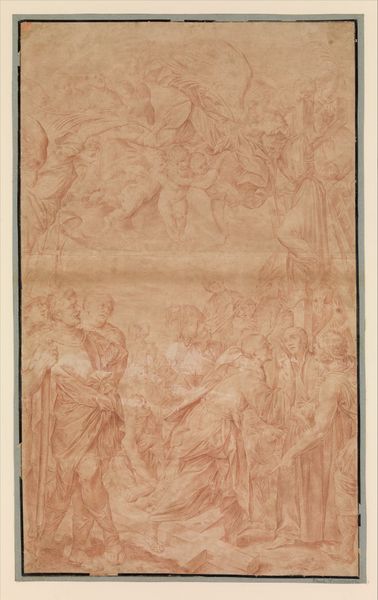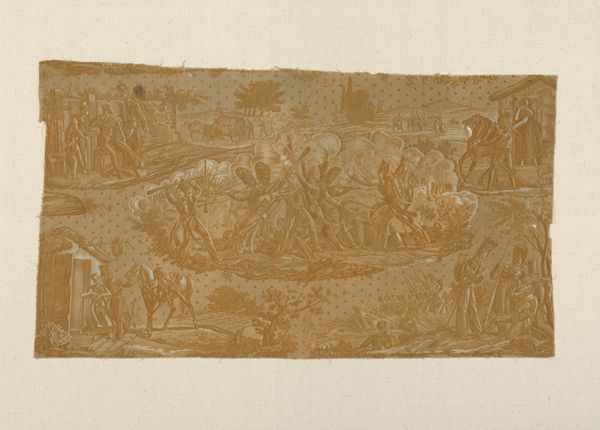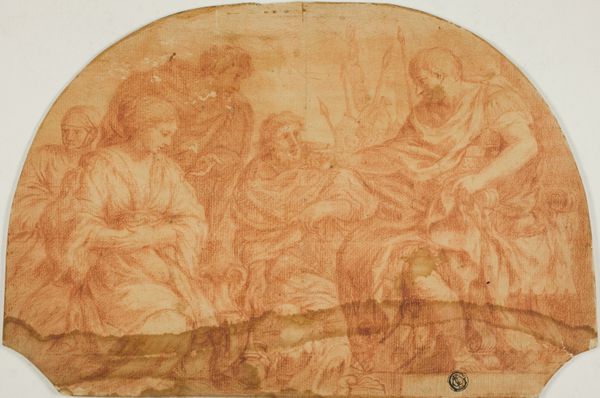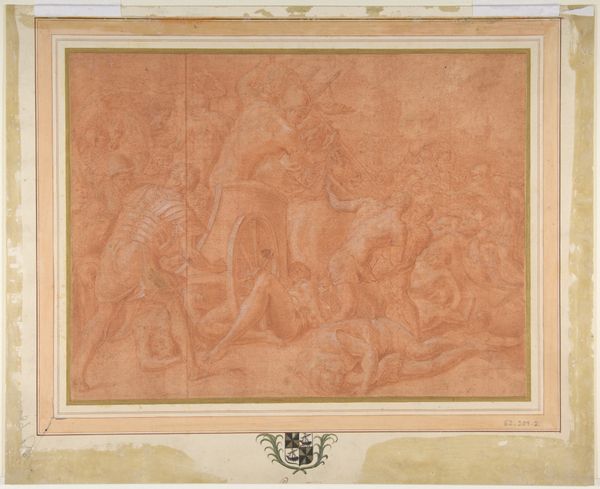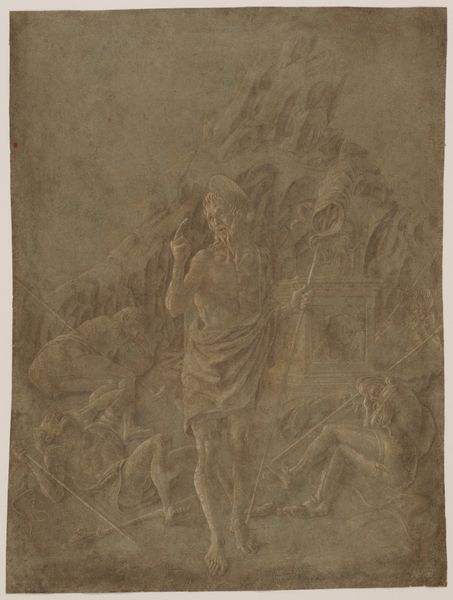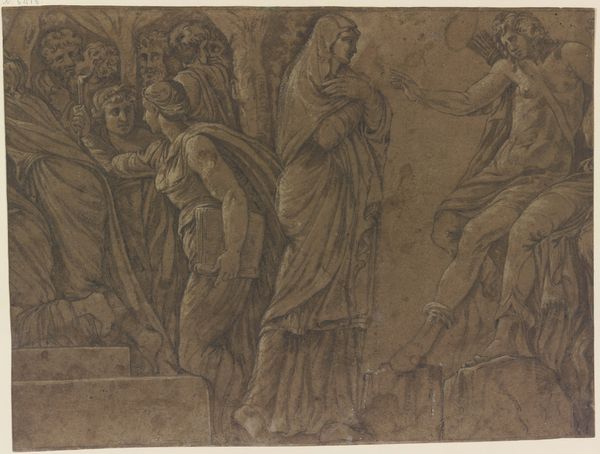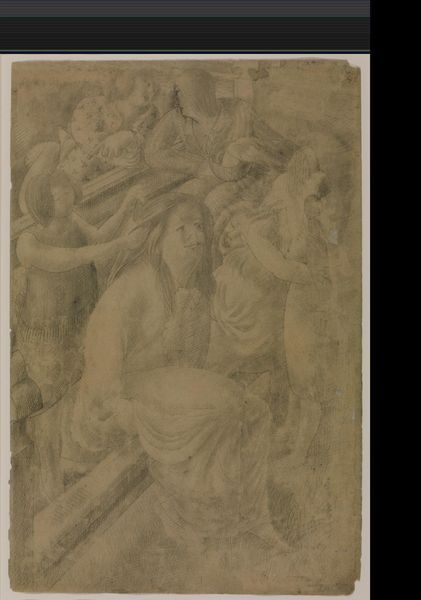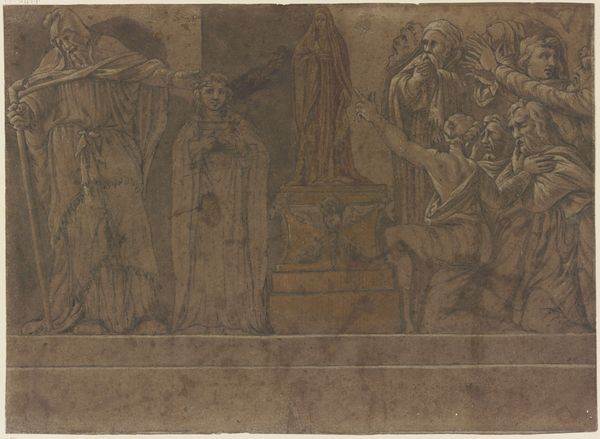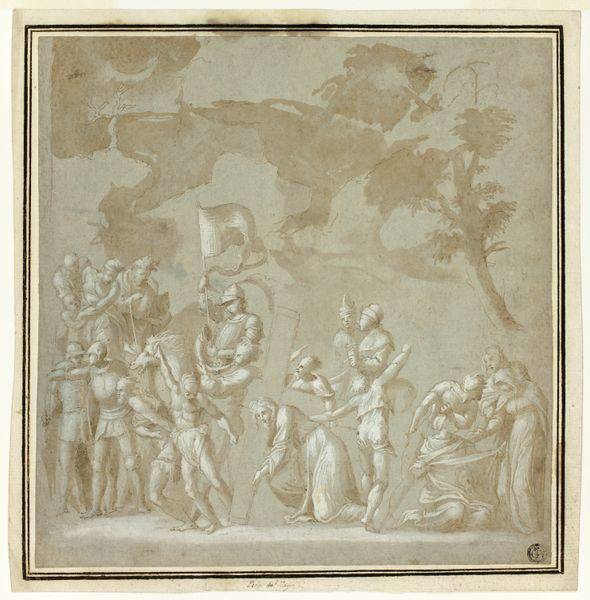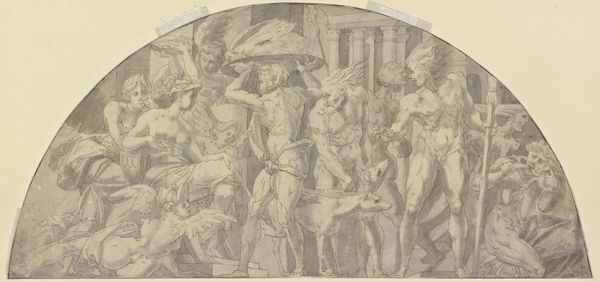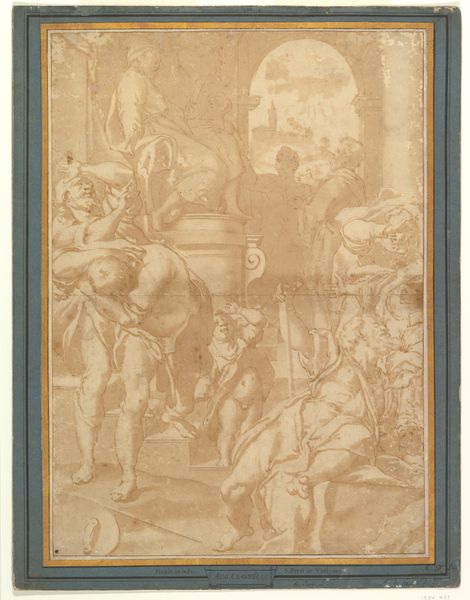
drawing, red-chalk, ink
#
drawing
#
high-renaissance
#
toned paper
#
narrative-art
#
red-chalk
#
figuration
#
ink
#
13_16th-century
#
history-painting
Copyright: Public Domain
Editor: Here we have "Elia opfert in Gegenwart von Ahab," made around 1557 by Antonio Campi. It's a drawing done with red chalk and ink on toned paper. The whole scene has a warm, almost monochromatic feel, and the figures are packed together. How do you interpret this work, focusing on its composition? Curator: The composition immediately draws attention. Campi has masterfully used the oval format to create a sense of dynamism and contained energy. Notice how the figures are arranged – there's a clear recession into depth, guided by the converging lines and the diminishing scale of figures towards the background. The High Renaissance favored symmetry and balance, and though present here, the dynamism certainly challenges that standard. The foreshortening used, what does that communicate to you? Editor: I see that the foreshortening really adds to that feeling of depth, but it also makes some of the figures seem a little bit… distorted? Almost like they’re bursting out of the picture plane? Curator: Precisely. It's this tension between idealized form and representational accuracy that is at play. Consider how Campi employs line. He’s not merely defining forms; he’s using line to create texture, shadow, and a sense of movement. Do you notice a difference in the application of ink and red chalk? Editor: Yes, the ink seems more deliberately outlining the figures, while the red chalk is used for shading and gives them a sense of volume. So, the contrast between those two creates depth. Curator: Exactly. That contrast, that interplay, creates visual interest. Campi has chosen a specific medium – red chalk on toned paper – and through his skill in manipulating line and form, he conveys not only the scene itself, but also the very process of artistic creation. That final unity allows this High Renaissance piece to endure through today. Editor: That’s a great observation, seeing how much thought went into the medium itself and the impact it has. I appreciate that, thank you! Curator: My pleasure, the process is just as interesting as the product in art, is it not?
Comments
No comments
Be the first to comment and join the conversation on the ultimate creative platform.
